Exploring the Intriguing Porcelain World
Welcome to the enchanting realm of porcelain, a material that has captivated hearts and minds for centuries. It's not just a type of ceramic; it’s a blend of artistry, culture, and history that tells the story of human creativity. Imagine holding a delicate piece of porcelain in your hands, feeling its smooth surface and admiring the intricate designs that seem to dance under the light. This is the magic of porcelain—a product of human ingenuity that has evolved through time and across continents.
The journey of porcelain begins in ancient China, where it was first developed around the 7th century. The Chinese mastered the art of creating this exquisite material, which became a symbol of sophistication and luxury. As trade routes expanded, so did the fame of porcelain, leading to its spread across Asia and eventually into Europe. Today, porcelain is a global phenomenon, with each culture adding its own unique twist to this timeless art form.
Throughout this article, we will dive deep into the fascinating history of porcelain, exploring its various types, artistic techniques, and the cultural significance it holds in different regions. Whether you're a seasoned collector or simply curious about this beautiful craft, there’s something here for everyone. So, grab a cup of tea, sit back, and let’s embark on this journey through the captivating world of porcelain!
Understanding the origins of porcelain reveals its evolution from ancient China to its global proliferation, highlighting key developments and historical milestones that shaped this exquisite material.
Porcelain comes in various forms, each with distinct characteristics. This section will explore the differences between hard-paste, soft-paste, and bone china, showcasing their unique properties and uses.
Hard-paste porcelain, known for its durability and translucence, originated in China. This subsection discusses its composition, manufacturing techniques, and historical significance in porcelain production.
The intricate process of creating hard-paste porcelain involves specific materials and techniques. This section outlines the steps from raw materials to the final product, emphasizing craftsmanship.
Hard-paste porcelain played a pivotal role in trade and cultural exchange. This subsection examines its impact on global commerce and its influence on European ceramics.
Soft-paste porcelain, developed in Europe as a response to hard-paste, has its own unique charm. This section explores its composition, characteristics, and the artistic styles it inspired.
Porcelain is not just functional; it is also a canvas for artistic expression. This section highlights various decorative techniques, including painting, glazing, and sculpting.
The art of painting on porcelain requires precision and skill. This subsection discusses various styles, such as underglaze and overglaze, and their historical contexts.
Glazing enhances both aesthetics and durability. This section explores different glazing techniques used in porcelain production, their effects on the final appearance, and their historical significance.
Porcelain has transcended borders, leading to unique traditions worldwide. This section examines how various cultures interpret and utilize porcelain in their art and daily life.
Asian porcelain, particularly Chinese and Japanese, is renowned for its artistry. This subsection explores the cultural significance and unique styles found in these regions.
European porcelain, influenced by Asian techniques, has its own distinct characteristics. This section discusses the evolution of European porcelain styles and their cultural implications.
Collecting porcelain is a popular hobby with a rich history. This section provides insights into what makes porcelain collectible, including tips for identifying valuable pieces and understanding market trends.
Recognizing authentic porcelain requires knowledge of markings, materials, and craftsmanship. This subsection offers guidance on how to distinguish genuine pieces from reproductions.
Proper care ensures the longevity of porcelain collections. This section discusses best practices for cleaning, displaying, and preserving porcelain to maintain its beauty and value.
- What is the difference between hard-paste and soft-paste porcelain? Hard-paste porcelain is known for its durability and translucence, while soft-paste porcelain is generally softer and more fragile, often with a more decorative focus.
- How can I tell if my porcelain is authentic? Look for specific markings, examine the craftsmanship, and research the piece's history to determine its authenticity.
- What is the best way to clean porcelain? Use a soft cloth and mild detergent to clean porcelain items, avoiding abrasive materials that could scratch the surface.
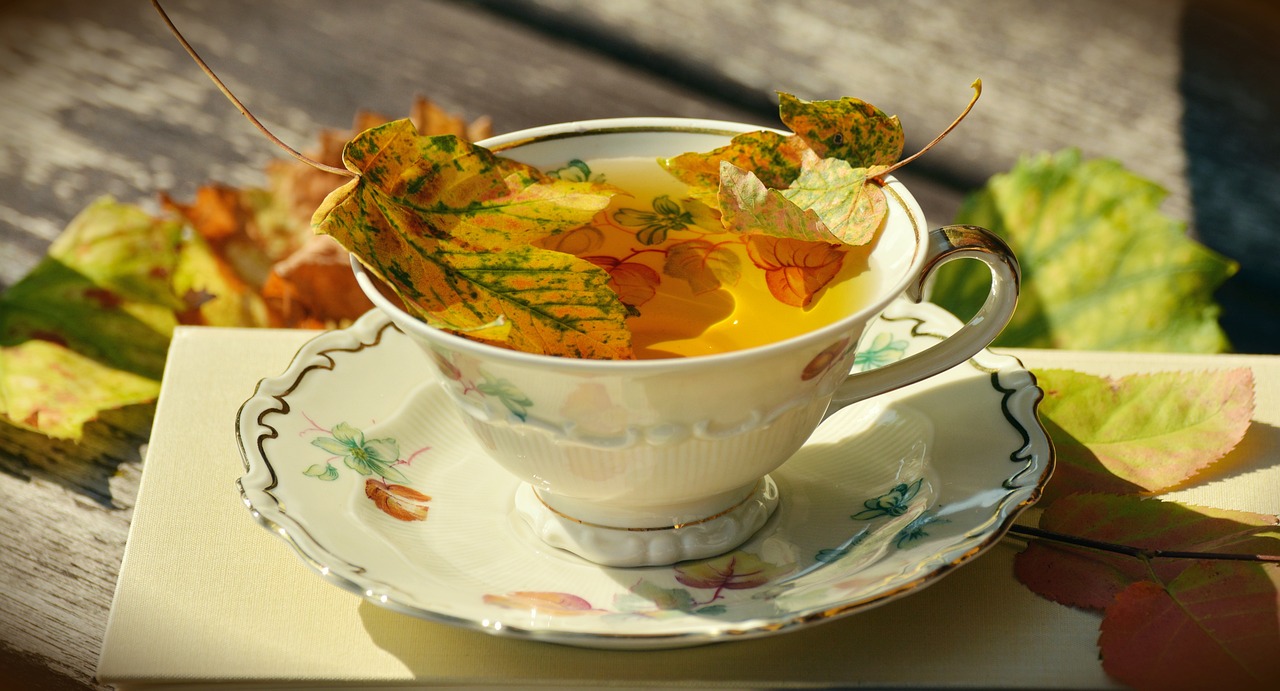
The History of Porcelain
Understanding the origins of porcelain reveals a fascinating journey that stretches back thousands of years. The story begins in ancient China, where artisans discovered the perfect combination of clay and minerals to create this exquisite material. Around the 7th century, the Tang Dynasty saw the first forms of porcelain emerge, but it was during the Song Dynasty (960-1279) that it truly flourished. The Chinese perfected the art, developing techniques that would remain unmatched for centuries.
As porcelain became a symbol of status and luxury, its allure spread beyond China's borders. By the 16th century, European traders were captivated by this delicate yet durable material. The famous Silk Road played a crucial role in this exchange, facilitating not only trade in goods but also ideas and techniques. However, the secret of making porcelain remained closely guarded by the Chinese for many years, leading to a frenzy of attempts by European potters to replicate the process.
It wasn’t until the early 18th century that European countries, particularly Germany, began to successfully produce their own versions of porcelain. The discovery of kaolin, a type of clay essential for high-quality porcelain, was a game changer. This led to the establishment of renowned porcelain factories like Meissen in Germany and Sèvres in France. These factories not only produced porcelain for everyday use but also created intricate art pieces that showcased the skill and creativity of European artisans.
Throughout the years, porcelain evolved and adapted, reflecting the cultural and artistic trends of each era. By the 19th century, it had become a global phenomenon, influencing styles and techniques across continents. The introduction of bone china in England added yet another dimension to porcelain, combining strength and translucence, which appealed to both collectors and everyday users alike.
Today, porcelain is celebrated not just for its beauty but also for its rich history that spans across cultures and continents. From the intricate designs of Chinese porcelain to the elegant simplicity of European pieces, each item tells a story of innovation, artistry, and cultural exchange. As we explore the various types and techniques of porcelain, it’s essential to appreciate the historical significance that has shaped this remarkable material into what it is today.
- What is porcelain made of? Porcelain is primarily made from a mixture of kaolin, feldspar, and quartz, which are fired at high temperatures to create a strong, durable material.
- How can I tell if porcelain is authentic? Authentic porcelain often has a smooth, glass-like surface and a translucent quality. Look for markings or stamps from reputable manufacturers.
- Why is porcelain considered valuable? Porcelain is valued for its artistry, craftsmanship, and historical significance, making it a sought-after item for collectors and enthusiasts.
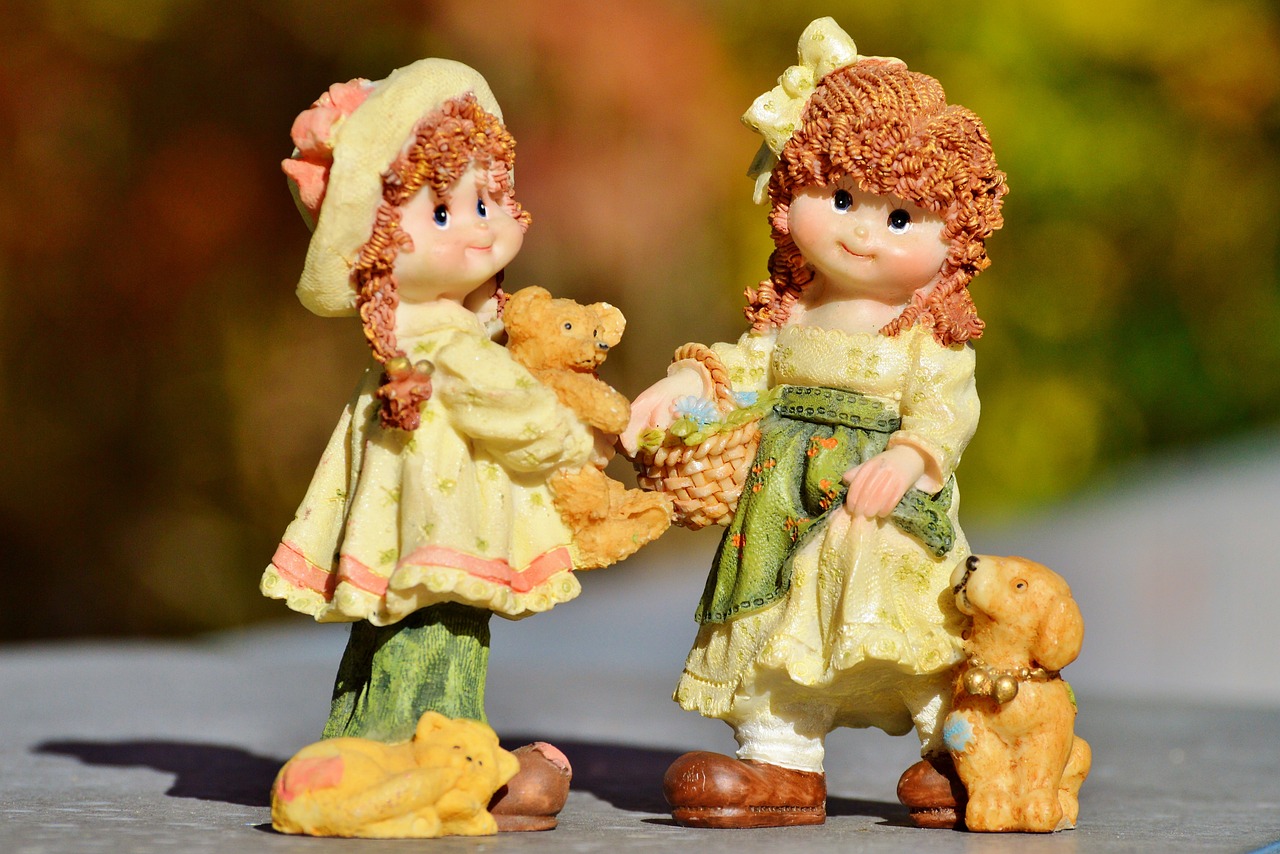
Types of Porcelain
When it comes to porcelain, it's not just a single type of material; rather, it encompasses a variety of forms, each with its own unique characteristics and charm. Understanding the different types of porcelain can enhance your appreciation for this exquisite art form and help you make informed choices whether you're a collector or simply an admirer. The three primary types of porcelain that stand out are hard-paste porcelain, soft-paste porcelain, and bone china. Each of these types has its own story, composition, and usage, making them fascinating subjects to explore.
Hard-paste porcelain, often referred to simply as porcelain, is known for its remarkable durability and translucent quality. Originating in China during the Tang Dynasty, this type of porcelain is made from a specific mixture of kaolin clay, feldspar, and quartz. The manufacturing process involves high-temperature firing, which gives hard-paste porcelain its strength and beautiful finish. It's the type most commonly associated with traditional porcelain items, such as fine dinnerware and decorative figurines.
On the other hand, soft-paste porcelain emerged in Europe as an attempt to replicate the hard-paste variety. Created from a mixture of clay and various fluxes, soft-paste porcelain is less durable but allows for a wider range of artistic expression. Artists could experiment with different styles and glazes, leading to unique decorative pieces that often feature vibrant colors and intricate designs. This type of porcelain is particularly famous for its role in the development of European ceramics during the 18th century.
Lastly, we have bone china, which is a type of soft-paste porcelain that incorporates bone ash into its composition. This addition not only enhances its strength but also gives it a distinctive translucence and whiteness. Bone china is often regarded as the finest type of porcelain due to its delicate appearance and luxurious feel. It's commonly used for high-end dinnerware and teacups, making it a favorite among collectors and enthusiasts alike.
To summarize, here’s a quick comparison of the three types of porcelain:
| Type of Porcelain | Characteristics | Common Uses |
|---|---|---|
| Hard-Paste Porcelain | Durable, translucent, high-temperature fired | Fine dinnerware, decorative items |
| Soft-Paste Porcelain | Less durable, colorful, artistic expression | Artistic pieces, decorative ceramics |
| Bone China | Translucent, strong, luxurious feel | High-end dinnerware, teacups |
Each type of porcelain tells a story of its own, reflecting the culture and artistry of its time. Whether you're captivated by the strength of hard-paste porcelain or the delicate beauty of bone china, there’s no denying the allure of this remarkable material. As you explore the world of porcelain, you’ll discover not only its diverse forms but also the rich history and craftsmanship that make it truly special.
- What is the difference between hard-paste and soft-paste porcelain?
Hard-paste porcelain is more durable and translucent, while soft-paste porcelain is less durable but allows for more artistic expression.
- Why is bone china considered the finest type of porcelain?
Bone china is made with bone ash, which gives it a unique translucence and strength, making it highly sought after for fine dinnerware.
- How can I identify authentic porcelain?
Look for markings, check the weight and feel, and examine the translucence. Authentic porcelain often has a smooth finish and a distinctive ring when tapped.

Hard-Paste Porcelain
When we think of porcelain, the first image that often comes to mind is that of , a material that has captivated artisans and collectors alike for centuries. Originating in ancient China during the Tang Dynasty, hard-paste porcelain is celebrated for its exceptional durability and translucence. Unlike its softer counterparts, this type of porcelain is made from a mixture of kaolin, feldspar, and quartz, which are meticulously combined and fired at high temperatures. The result? A stunningly strong and luminous material that has been a staple in both functional and decorative arts.
The manufacturing process of hard-paste porcelain is nothing short of an art form. It begins with the careful selection of raw materials, where each component plays a vital role in the final product's quality. The kaolin provides the necessary white color and plasticity, while feldspar acts as a flux, lowering the melting point and helping the mixture to fuse. Quartz contributes to the overall strength and stability of the porcelain. Once these ingredients are blended, they are shaped into desired forms, whether it be delicate teacups or elaborate vases. After shaping, the pieces undergo a two-stage firing process: the first at a lower temperature to create a biscuit form, and the second at a much higher temperature to achieve the final hard-paste porcelain finish.
What makes hard-paste porcelain particularly fascinating is its historical significance. It played a crucial role in global trade, especially during the 17th and 18th centuries when European countries were eager to acquire this exquisite material. The demand led to the establishment of trade routes and cultural exchanges that enriched both Eastern and Western art forms. In fact, many European manufacturers, eager to replicate the Chinese success, embarked on their own journey to produce hard-paste porcelain, leading to the creation of iconic brands such as Meissen and Sèvres.
To further understand the allure of hard-paste porcelain, it’s essential to appreciate its unique characteristics:
- Durability: Hard-paste porcelain is known for its resistance to chipping and scratching, making it ideal for everyday use.
- Translucence: When held up to the light, high-quality hard-paste porcelain exhibits a delicate glow, showcasing its fine craftsmanship.
- Variety of Finishes: From glossy glazes to intricate underglaze decorations, the finishing options are as diverse as the artists who create them.
In conclusion, hard-paste porcelain is not just a material; it is a testament to human creativity and cultural exchange. Its journey from the ancient kilns of China to the opulent tables of Europe is a story woven with artistry, trade, and innovation. Whether you are a collector, an artist, or simply an admirer, understanding hard-paste porcelain enriches your appreciation for this timeless craft.
- What is the difference between hard-paste and soft-paste porcelain? Hard-paste porcelain is made from a specific mixture that includes kaolin, feldspar, and quartz, while soft-paste porcelain typically contains a mixture of clay and other materials that result in a more fragile product.
- How can I tell if my porcelain is hard-paste? Authentic hard-paste porcelain usually has a translucent quality and a resonant sound when tapped. Additionally, look for specific markings or stamps from reputable manufacturers.
- Is hard-paste porcelain safe for food use? Yes, hard-paste porcelain is generally safe for food use, but always check if it’s marked as food-safe, especially for decorative pieces.

Manufacturing Process
The manufacturing process of hard-paste porcelain is a fascinating journey that transforms raw materials into exquisite pieces of art. It begins with the careful selection of key ingredients, primarily kaolin (a type of clay), feldspar, and quartz. Each component plays a critical role in the final product's strength, translucence, and overall aesthetic appeal.
Initially, the kaolin is ground into a fine powder and mixed with water to create a workable paste. This paste is then combined with feldspar and quartz in specific ratios, which can vary depending on the desired characteristics of the porcelain. The mixture undergoes a rigorous process of kneading and molding, where artisans skillfully shape it into various forms, from delicate teacups to intricate figurines.
Once shaped, the porcelain pieces are carefully dried to remove excess moisture. This drying phase is crucial, as it helps prevent cracks during firing. After drying, the pieces are subjected to the first firing, known as bisque firing, which occurs at high temperatures ranging from 1,200 to 1,400 degrees Celsius. This initial firing solidifies the shape and prepares the porcelain for glazing.
After bisque firing, the porcelain is ready for glazing. Glazing not only enhances the visual appeal of the porcelain but also adds a protective layer. Artisans apply a glaze mixture, which can contain various minerals and oxides, to the surface. The glazed pieces are then fired again at a higher temperature, often around 1,400 to 1,600 degrees Celsius, allowing the glaze to melt and bond with the porcelain body, creating a smooth, glass-like finish.
Throughout this intricate process, craftsmanship is paramount. Each step requires precision and an understanding of the materials involved. The result is a product that is not only beautiful but also durable, capable of withstanding the test of time. The artistry involved in the manufacturing of hard-paste porcelain is a testament to the skill and dedication of the artisans who have perfected these techniques over centuries.
In summary, the manufacturing process of hard-paste porcelain is a blend of science and art, where raw materials are transformed through careful handling and expert craftsmanship. This process not only produces stunning pieces but also preserves a rich tradition that has been cherished throughout history.
- What is hard-paste porcelain? Hard-paste porcelain is a type of porcelain made from kaolin, feldspar, and quartz, known for its durability and translucence.
- How is porcelain made? Porcelain is made by mixing raw materials, shaping them, drying, and firing them at high temperatures.
- What are the different types of porcelain? The main types include hard-paste, soft-paste, and bone china, each with unique characteristics.
- How should I care for my porcelain items? Proper care involves gentle cleaning, avoiding harsh chemicals, and storing them in a safe environment to prevent damage.

Historical Significance
The historical significance of hard-paste porcelain is profound, as it has been a cornerstone of trade and cultural exchange since its inception in ancient China. This remarkable material, often referred to as "white gold," was not only a luxury item but also a symbol of sophistication and refinement. Its discovery around the early 8th century during the Tang Dynasty marked a pivotal moment in ceramic history, setting the stage for centuries of artistic and commercial endeavors.
As porcelain made its way along the Silk Road, it captivated the hearts and minds of artisans and collectors alike, leading to a surge in demand across Asia and eventually Europe. The European fascination with this delicate yet robust material began in the 16th century when the first shipments of Chinese porcelain reached the continent. This influx sparked an intense desire for porcelain, leading to the establishment of various porcelain factories in Europe. Notably, the Meissen factory in Germany was among the first to successfully replicate the hard-paste porcelain formula, which was a closely guarded secret of the Chinese.
Furthermore, the cultural implications of hard-paste porcelain cannot be overstated. It served as a medium for artistic expression, allowing artisans to showcase intricate designs and techniques that reflected their cultural heritage. The production of porcelain not only influenced art but also played a crucial role in the economy. The trade of porcelain became a significant part of global commerce, intertwining the fates of nations and fostering diplomatic relations.
In addition to its economic impact, hard-paste porcelain also symbolized status and wealth. Aristocrats and royalty adorned their tables with exquisite porcelain dinnerware, while collectors sought after rare pieces to display in their homes. The allure of porcelain was so strong that it often dictated trends in interior design, influencing how spaces were decorated and how people interacted with art.
Today, the legacy of hard-paste porcelain endures, with museums and collectors cherishing its historical value. Understanding its significance allows us to appreciate not just the beauty of porcelain but also the rich tapestry of human history that it represents. The journey of hard-paste porcelain from the kilns of China to the drawing rooms of Europe is a testament to the enduring power of art and trade in shaping our world.
- What is hard-paste porcelain? Hard-paste porcelain is a type of porcelain that is known for its durability and translucence, originating in China.
- How did porcelain influence trade? Porcelain became a highly sought-after commodity, facilitating trade between East and West and impacting global commerce.
- Why is porcelain considered valuable? Its intricate craftsmanship, historical significance, and rarity make porcelain highly collectible and valuable.
- What are the main types of porcelain? The main types include hard-paste, soft-paste, and bone china, each with distinct characteristics and uses.

Soft-Paste Porcelain
Soft-paste porcelain is a fascinating chapter in the story of ceramics, emerging as a European innovation in response to the highly esteemed hard-paste porcelain from China. Developed during the late 17th and early 18th centuries, it represents a blend of artistry and experimentation, showcasing the creativity of European potters who sought to replicate the delicate beauty of their Asian counterparts. Unlike hard-paste porcelain, which is made from kaolin and petuntse, soft-paste porcelain is typically composed of a mixture of clay, frit (a glass-like substance), and sometimes other materials like bone ash. This unique composition gives soft-paste porcelain its characteristic softness and a slightly translucent quality, making it a beloved choice among collectors and artists alike.
One of the most intriguing aspects of soft-paste porcelain is its artistic versatility. The softer body allows for intricate designs and fine details that can be challenging to achieve with harder materials. Artisans often employed various decorative techniques, such as hand painting and gilding, to enhance the visual appeal of their creations. The vibrant colors and elaborate patterns found on soft-paste porcelain pieces often reflect the cultural influences of the time, with motifs ranging from floral designs to mythological scenes. This rich tapestry of artistic expression is what makes soft-paste porcelain so captivating to collectors and enthusiasts.
Moreover, soft-paste porcelain played a significant role in the evolution of European ceramics. As potters experimented with different formulations and firing techniques, they began to develop their distinct styles and methods. For instance, the famous Worcester porcelain and Bow porcelain factories in England are renowned for their exquisite soft-paste pieces, each showcasing unique characteristics that reflect the local culture and artistic trends. These factories not only contributed to the popularity of soft-paste porcelain but also laid the groundwork for future innovations in the ceramic arts.
In terms of functionality, soft-paste porcelain was often used for tableware, decorative objects, and even figurines. Its ability to withstand both beauty and utility made it a staple in many households during the 18th and 19th centuries. However, it's essential to note that while soft-paste porcelain can be quite durable, it is generally more susceptible to chipping and wear compared to its hard-paste counterpart. This fragility adds an element of care when it comes to preserving these delicate treasures, but it also enhances their charm, as each piece tells a story of craftsmanship and history.
In conclusion, soft-paste porcelain stands as a testament to human creativity and resilience. It embodies the spirit of an era where artisans pushed boundaries and sought to create beauty that transcended cultural divides. Whether you're a seasoned collector or just beginning to explore the world of porcelain, understanding the nuances of soft-paste porcelain can deepen your appreciation for these exquisite works of art.
- What is the main difference between hard-paste and soft-paste porcelain?
Hard-paste porcelain is made from kaolin and petuntse, while soft-paste porcelain contains a mixture of clay and frit, resulting in a softer body. - Is soft-paste porcelain more fragile than hard-paste porcelain?
Yes, soft-paste porcelain is generally more susceptible to chipping and wear, requiring careful handling. - What are some famous manufacturers of soft-paste porcelain?
Notable manufacturers include Worcester and Bow porcelain factories in England, known for their unique styles and artistic contributions. - How can I identify authentic soft-paste porcelain?
Look for specific markings, craftsmanship details, and the characteristic softness of the material when evaluating pieces.
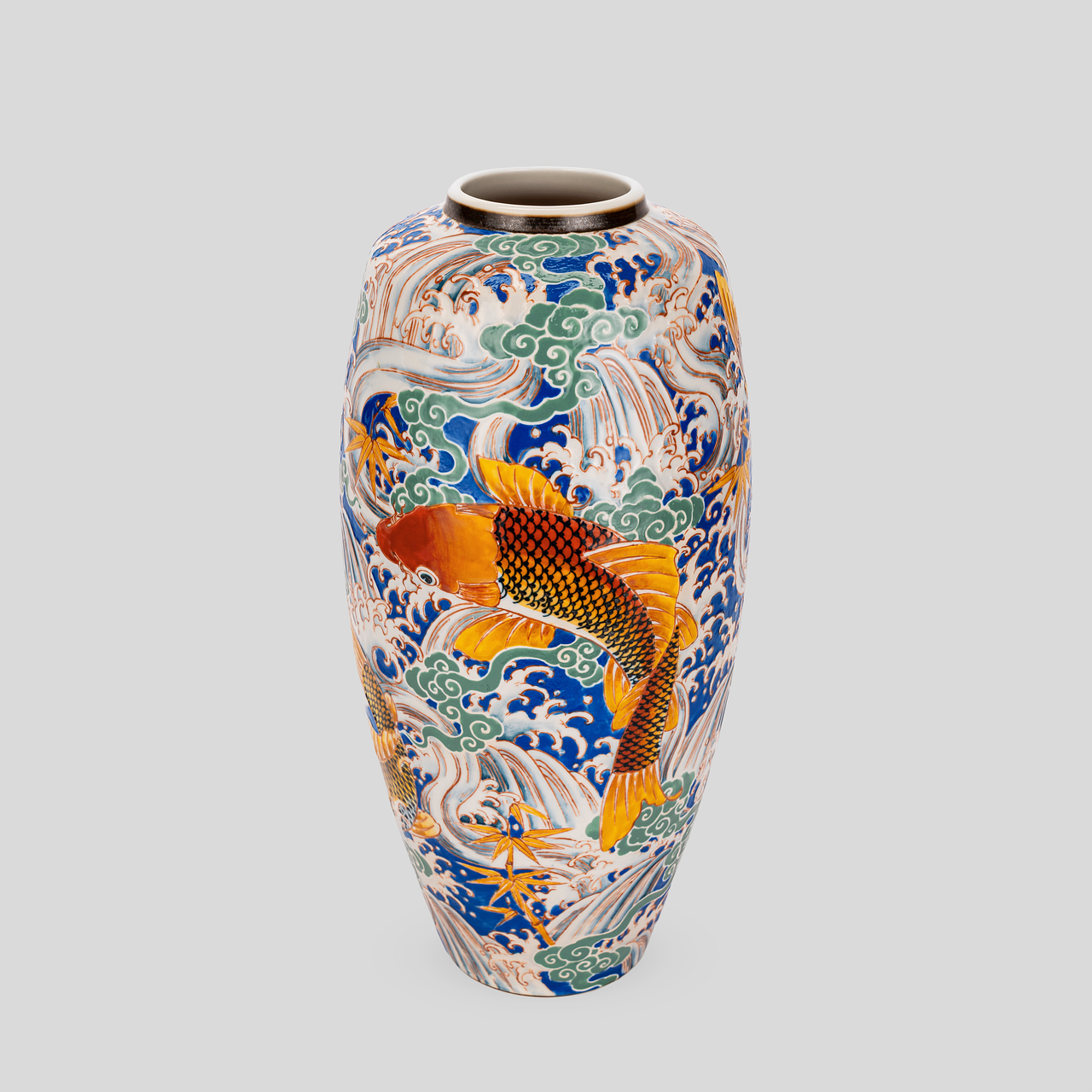
Porcelain Art and Decoration
Porcelain is not just a material; it is a canvas for creativity and artistic expression. Throughout history, artisans have transformed plain porcelain into breathtaking works of art. The beauty of porcelain lies not only in its form but also in the intricate decorations that adorn it. From delicate floral patterns to elaborate scenes depicting historical events, the art of decorating porcelain has evolved significantly, showcasing the cultural heritage of different regions.
One of the most fascinating aspects of porcelain decoration is the variety of techniques used by artists. These techniques can be broadly categorized into painting, glazing, and sculpting, each contributing to the overall aesthetics and functionality of the piece. For instance, painting on porcelain requires a steady hand and an eye for detail, as the artist must carefully apply colors that will withstand the high temperatures of the kiln. The two primary styles of painting are underglaze and overglaze, each offering unique challenges and results.
Underglaze painting involves applying color to the porcelain before it is glazed, allowing the design to become part of the surface. This technique often results in vibrant, long-lasting colors that do not fade easily. In contrast, overglaze painting is done after the initial glaze has been applied and fired, allowing for more intricate designs and a glossy finish. Artists can use a variety of pigments and tools to achieve different effects, making each piece truly one-of-a-kind.
Another vital aspect of porcelain decoration is glazing. Glazing not only enhances the visual appeal of porcelain but also adds a layer of protection. Different glazing methods can produce various finishes, from glossy to matte, and can even affect the color of the underlying material. For example, a clear glaze can accentuate the natural beauty of the porcelain body, while colored glazes can add depth and richness to the design. The choice of glaze is crucial, as it can significantly influence the final appearance and durability of the porcelain piece.
In addition to painting and glazing, sculpting plays a critical role in porcelain art. Skilled artisans often create intricate figures and shapes, turning porcelain into stunning three-dimensional works of art. This technique requires a deep understanding of the material's properties, as the sculptor must consider how the porcelain will behave during firing. The result is a harmonious blend of form and function, where each piece tells a story through its design and craftsmanship.
To truly appreciate the art of porcelain decoration, one must consider the cultural significance behind the designs. Different regions have their own styles, influenced by local traditions, historical events, and even the natural environment. For instance, Chinese porcelain often features motifs inspired by nature, such as flowers, birds, and landscapes, reflecting the deep connection between art and nature in Chinese culture. Similarly, European porcelain artists drew inspiration from their own cultural narratives, incorporating elements from mythology, history, and everyday life into their work.
As porcelain continues to evolve, contemporary artists are pushing the boundaries of traditional techniques, experimenting with new methods and materials. This ongoing innovation ensures that porcelain remains a vibrant and relevant medium for artistic expression, captivating collectors and art enthusiasts alike.
- What is porcelain? Porcelain is a ceramic material made from a mixture of clay, feldspar, and quartz, known for its strength, translucence, and beauty.
- How is porcelain decorated? Porcelain can be decorated using various techniques, including painting (underglaze and overglaze), glazing, and sculpting.
- What are the different types of porcelain? The main types include hard-paste porcelain, soft-paste porcelain, and bone china, each with unique properties and characteristics.
- How do I care for porcelain? To care for porcelain, clean it gently with a soft cloth, avoid harsh chemicals, and store it in a stable environment to prevent chipping or cracking.
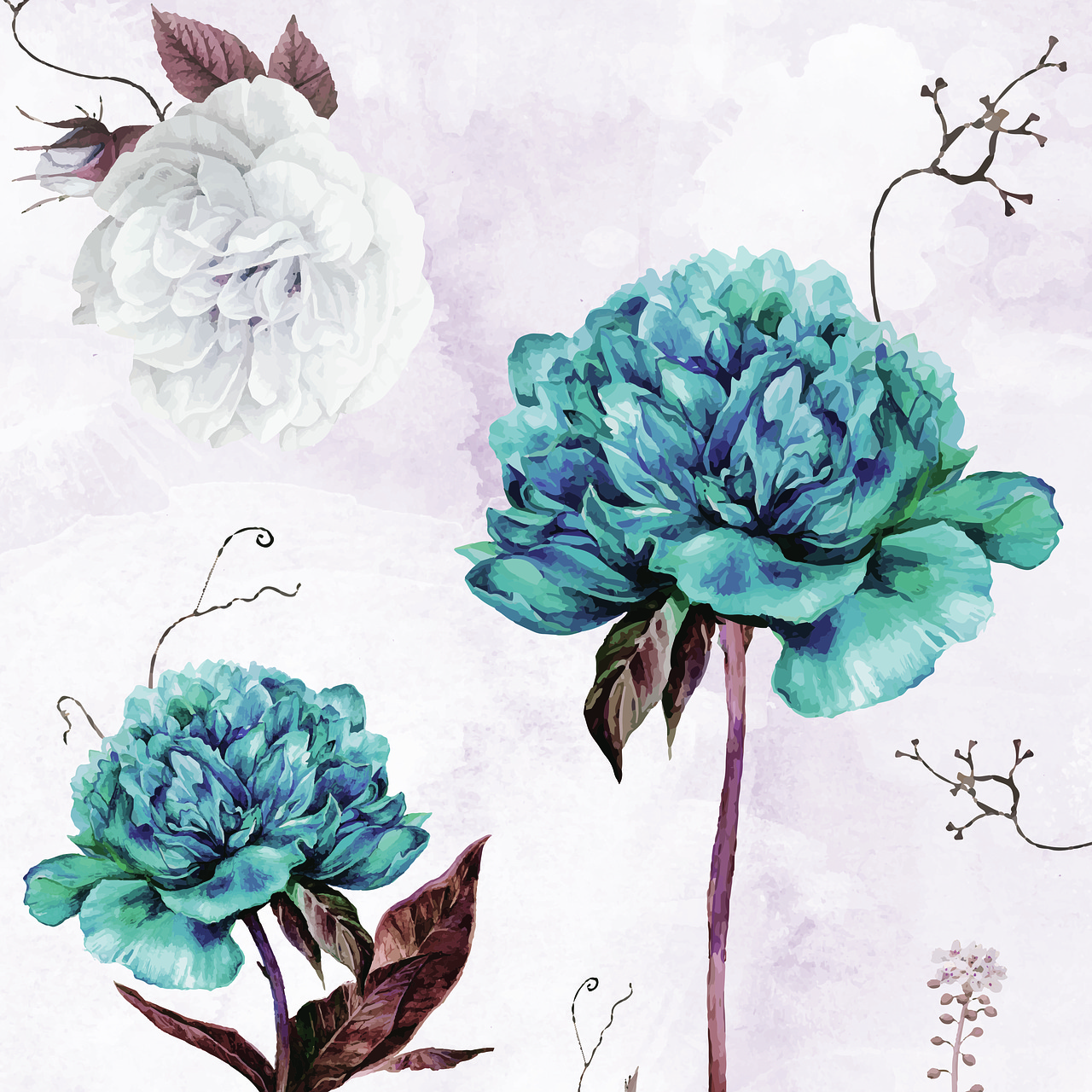
Painting Techniques
The art of painting on porcelain is a delicate and intricate process that requires not just skill but also a deep appreciation for the material itself. Porcelain serves as a unique canvas, allowing artists to express their creativity through various painting techniques that have evolved over centuries. One of the most notable methods is underglaze painting, where designs are painted on the porcelain body before it is glazed. This technique ensures that the colors remain vibrant and protected under a glossy finish, allowing for intricate details and a sense of depth in the artwork.
On the other hand, overglaze painting involves applying colors on top of the already glazed surface. This technique is often used for adding fine details or highlighting specific areas of a piece, providing a striking contrast against the smooth glaze. Overglaze colors are typically more vibrant but require a second firing to set the paint, making the process a bit more complex.
Artists often experiment with a variety of styles and motifs, drawing inspiration from cultural heritage, nature, and everyday life. For instance, traditional Chinese porcelain often features blue and white designs, which are achieved through cobalt oxide underglaze. These pieces are not only visually stunning but also steeped in history, as they reflect the artistic sensibilities of the time and place they were created. Similarly, Japanese porcelain is known for its vibrant colors and intricate patterns, often inspired by nature, which can be seen in the works of famous kilns like Arita and Imari.
To gain a better understanding of these techniques, let’s take a look at the following table that summarizes the key differences between underglaze and overglaze painting:
| Technique | Application | Firing Process | Color Characteristics |
|---|---|---|---|
| Underglaze | Painted before glazing | Single firing | Colors remain vibrant and protected |
| Overglaze | Applied on top of glaze | Double firing | More vibrant but requires careful handling |
In conclusion, the techniques of painting on porcelain not only enhance the beauty of the pieces but also tell stories of the cultures and traditions from which they originate. Whether through the subtle elegance of underglaze or the bold expressions of overglaze, each brushstroke contributes to the rich tapestry of porcelain art. As you delve deeper into the world of porcelain, you’ll discover that every painted piece holds a unique narrative, waiting to be explored.
- What is the difference between underglaze and overglaze painting? Underglaze painting is done before glazing, while overglaze painting is applied on top of the glaze. Underglaze colors are typically more durable, while overglaze colors are more vibrant but require a second firing.
- Can any type of paint be used on porcelain? No, specialized porcelain paints must be used to ensure proper adhesion and durability. These paints are formulated to withstand the high temperatures of the firing process.
- How can I care for painted porcelain items? It’s best to hand wash painted porcelain with a mild detergent and avoid abrasive materials that could scratch the surface. Keeping them out of direct sunlight can also help preserve the colors.

Glazing Methods
When it comes to porcelain, glazing is where the magic truly happens. It's not just about making a piece look pretty; glazing enhances both the aesthetic appeal and the durability of the porcelain. Think of glaze as the icing on a cake—it's what gives the final product its shine and protects it from wear and tear. There are several glazing methods, each with its own unique characteristics and historical significance.
One of the most common glazing techniques is glossy glazing, which produces a shiny surface that reflects light beautifully. This method is particularly popular in fine china, where the goal is to create an elegant and luxurious appearance. On the other hand, matte glazing offers a more subdued, tactile finish that can evoke a sense of warmth and intimacy. Matte glazes are often used in rustic or artisanal pieces, where the focus is on the natural beauty of the clay rather than a high-gloss finish.
Another fascinating technique is underglazing, where designs are painted onto the porcelain before the glaze is applied. This method allows for intricate designs that are protected by the glaze, ensuring their longevity. Underglazing can involve a variety of materials, including colored slips or pigments, and can result in stunning, detailed artwork that showcases the artisan's skill.
In contrast, overglazing involves applying a decoration after the initial glaze has been fired. This method allows artists to add vibrant colors and intricate details that would not withstand the high temperatures of the initial firing. Overglazes are often used for decorative pieces rather than functional ware, as they may not be as durable as underglazes.
To illustrate the differences in glazing methods, here’s a simple comparison table:
| Glazing Method | Description | Common Uses |
|---|---|---|
| Glossy Glazing | Produces a shiny, reflective surface. | Fine china, decorative pieces. |
| Matte Glazing | Offers a soft, non-reflective finish. | Rustic pottery, artisanal items. |
| Underglazing | Decoration applied before glazing, protected by the glaze. | Intricate designs on functional ware. |
| Overglazing | Decoration applied after the initial glaze firing. | Decorative items, limited-use pieces. |
Each glazing method not only affects the visual appeal of the porcelain but also influences its functionality. For instance, glossy glazes are typically more resistant to stains and scratches, making them ideal for everyday use. Conversely, while overglazed pieces can be stunning, they may require more careful handling and cleaning due to their vulnerability.
In conclusion, glazing methods are a crucial aspect of porcelain artistry, transforming raw pieces into stunning works of art. Whether it's the glossy sheen of fine china or the rustic charm of matte finishes, the choice of glaze can dramatically alter the perception and utility of porcelain items. So next time you admire a porcelain piece, take a moment to appreciate the artistry behind its glaze!
- What is the purpose of glazing in porcelain? Glazing enhances the beauty and durability of porcelain, providing a protective layer that can also add color and texture.
- Can all porcelain be glazed? Yes, all types of porcelain can be glazed, but the methods and results may vary depending on the type of porcelain and the desired effect.
- How do I care for glazed porcelain? Clean glazed porcelain with a soft cloth and mild soap. Avoid abrasive cleaners that can scratch the surface.

Global Porcelain Traditions
Porcelain is not merely a material; it’s a testament to the cultural narratives woven throughout history. As we journey across the globe, we find that different regions have embraced porcelain, each adding their unique flair and significance. From the delicate artistry of Asian porcelain to the bold innovations of European styles, the traditions surrounding porcelain reflect a rich tapestry of cultural exchange and artistic expression.
In Asia, porcelain is often seen as a symbol of refinement and status. Chinese porcelain, known for its intricate designs and vibrant glazes, has been celebrated for centuries. The Ming and Qing dynasties marked the pinnacle of porcelain production, with artisans perfecting techniques that produced pieces of stunning beauty. The famous blue-and-white porcelain, adorned with intricate motifs, tells stories of Chinese mythology and nature, making each piece not just a functional item but a work of art. Similarly, Japanese porcelain has its own narrative, often characterized by its simplicity and harmony with nature. The Japanese approach emphasizes subtlety, with pieces like Imari and Arita showcasing vibrant colors and delicate patterns that reflect the country's aesthetic values.
On the other hand, European porcelain traditions were significantly influenced by Asian techniques, leading to the creation of distinct styles that catered to local tastes. The introduction of porcelain to Europe in the 18th century sparked a revolution in ceramics. Meissen porcelain in Germany, for example, became renowned for its elaborate decorations and innovative forms. The artisans at Meissen were inspired by Chinese designs but infused their creations with a uniquely European flair, often incorporating local themes and motifs. This blend of influences illustrates how porcelain has the power to transcend cultural boundaries, adapting and evolving in new contexts.
Furthermore, the impact of porcelain extends beyond mere aesthetics. It has played a crucial role in trade, diplomacy, and cultural exchange. The East India Company famously transported Chinese porcelain to Europe, where it became a coveted luxury item among the aristocracy. As porcelain traveled, it not only influenced local artisans but also sparked a renaissance in ceramic techniques across the continent. This cross-pollination of ideas can be seen in the way different cultures adopted and adapted porcelain, leading to the creation of unique regional styles.
In summary, the global traditions of porcelain are a reflection of the intricate interplay between culture, artistry, and history. Each piece of porcelain holds within it a story, a history that connects us to different times and places. As we appreciate these global traditions, we recognize that porcelain is more than just a beautiful object—it is a bridge that connects diverse cultures and celebrates the shared human experience.
- What is the origin of porcelain? Porcelain originated in China during the Tang Dynasty (618–907 AD) and was perfected in later dynasties.
- How is porcelain different from stoneware and earthenware? Porcelain is fired at higher temperatures than stoneware and earthenware, making it more durable and translucent.
- What are the different types of porcelain? The main types are hard-paste, soft-paste, and bone china, each with distinct characteristics and uses.
- How can I identify authentic porcelain? Look for specific markings, examine the quality of craftsmanship, and check for translucence when held up to light.
- What is the best way to care for porcelain? Clean with a soft cloth and mild detergent, avoid abrasive materials, and store in a safe, dry place to prevent chipping.

Asian Porcelain Traditions
When we think of porcelain, it’s impossible to overlook the rich and intricate traditions that have developed in Asia, particularly in China and Japan. These regions have not only perfected the art of porcelain making but have also embedded it deeply within their cultural narratives. The journey of porcelain in Asia is akin to a beautiful tapestry, woven through centuries of innovation, artistry, and cultural significance.
Starting with Chinese porcelain, its history dates back to the Tang Dynasty (618–907 AD), but it was during the Song Dynasty (960–1279 AD) that porcelain truly flourished. The Chinese developed the technique of firing clay at high temperatures, resulting in a product that was both dazzlingly white and remarkably durable. This innovation was a game-changer, allowing for the creation of delicate and intricate designs that captivated not just local audiences but also international markets.
One of the most celebrated forms of Chinese porcelain is blue and white porcelain, characterized by its stunning cobalt blue designs on a white background. This style became immensely popular during the Ming Dynasty (1368–1644 AD) and is still highly sought after today. The motifs often depict scenes from nature, mythology, and everyday life, making each piece a narrative in itself. The artistry involved in creating these pieces is a testament to the skill and dedication of Chinese artisans.
Moving to Japanese porcelain, we find that the tradition began to take shape in the early 17th century, heavily influenced by Chinese techniques. However, Japan quickly developed its own unique styles, such as Imari and Kutani. Imari porcelain, originating from the Arita region, is known for its vibrant colors and intricate patterns, often featuring motifs of flowers and birds. In contrast, Kutani porcelain is recognized for its bold colors and elaborate designs, showcasing a more expressive artistic style.
| Type of Porcelain | Origin | Characteristics |
|---|---|---|
| Blue and White Porcelain | China | Delicate designs with cobalt blue on white |
| Imari Porcelain | Japan | Vibrant colors, intricate floral and bird motifs |
| Kutani Porcelain | Japan | Bold colors, expressive designs |
What makes these Asian porcelain traditions particularly fascinating is their cultural significance. In China, porcelain was not just a commodity; it was a symbol of status and refinement. The ability to possess and display exquisite porcelain pieces was often associated with wealth and sophistication. Similarly, in Japan, porcelain became a medium for expressing aesthetic values, reflecting the country's deep appreciation for nature and beauty.
Moreover, the impact of these traditions extends beyond art and culture. The trade of porcelain played a crucial role in establishing trade routes, connecting East and West. The allure of porcelain led to the establishment of the Silk Road, where merchants exchanged not only goods but also ideas and culture. This exchange enriched both Asian and European societies, highlighting the importance of porcelain as a bridge between cultures.
In conclusion, the are a remarkable blend of history, artistry, and cultural significance. Each piece tells a story, encapsulating the essence of the region it comes from. As we continue to explore these traditions, we gain a deeper appreciation for the craftsmanship and heritage that porcelain represents.
- What is the difference between Chinese and Japanese porcelain? Chinese porcelain is often characterized by its delicate blue and white designs, while Japanese porcelain features vibrant colors and unique styles like Imari and Kutani.
- Why is porcelain considered valuable? Porcelain is valued for its beauty, durability, and the skill involved in its production. Historical pieces, especially those from renowned periods or artists, can fetch high prices at auctions.
- How can I identify authentic Asian porcelain? Look for specific markings, check the craftsmanship, and be aware of the materials used. Authentic pieces often reflect a high level of detail and quality.
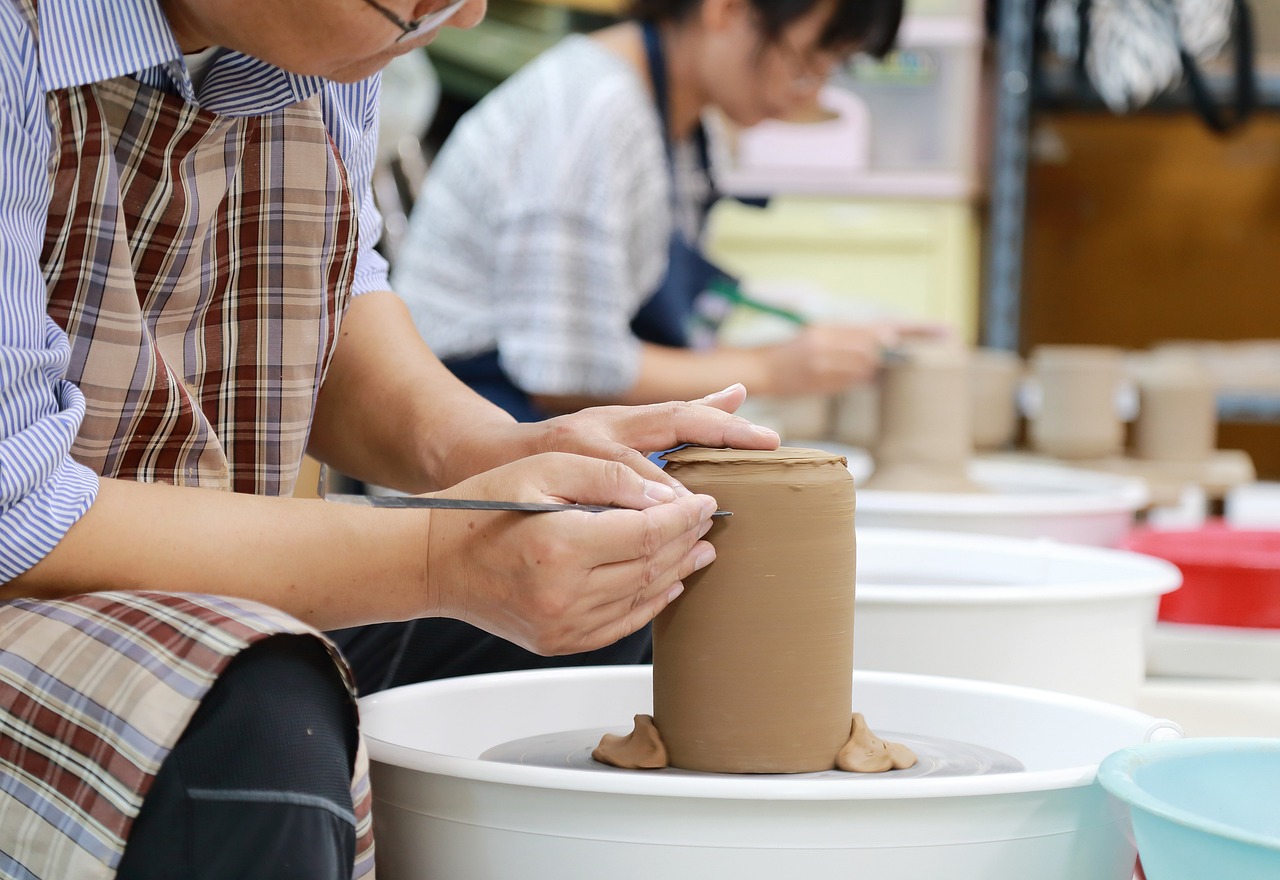
European Porcelain Influences
The journey of porcelain from the East to the West is a fascinating tale of cultural exchange and artistic evolution. When porcelain first made its way to Europe in the early 18th century, it was met with a mix of intrigue and admiration. European artisans, inspired by the delicate beauty and superior quality of Asian porcelain, embarked on a quest to replicate this exquisite material. This quest led to the birth of unique European porcelain styles, each reflecting the region's cultural identity and artistic sensibilities.
One of the most significant influences came from the Chinese porcelain, particularly the famous blue-and-white designs that captivated European collectors. The intricate patterns and vibrant colors inspired European potters to experiment with their own designs, leading to the development of distinct styles such as those seen in Delftware from the Netherlands and the renowned Meissen porcelain from Germany. The Meissen porcelain, established in 1710, became a hallmark of quality and artistry, setting the standard for porcelain production in Europe.
In addition to Meissen, other notable European porcelain manufacturers emerged, including:
- Royal Worcester (England) - Known for its fine bone china and intricate hand-painted designs.
- Sèvres (France) - Renowned for its luxurious pieces that often featured elaborate decorations and gilding.
- Capodimonte (Italy) - Famous for its delicate figures and floral motifs, combining porcelain with artistic craftsmanship.
These manufacturers not only adopted techniques from their Asian counterparts but also infused their works with local artistic styles, creating a beautiful fusion of cultures. For instance, while the Chinese porcelain often featured nature-inspired motifs, European artisans began incorporating mythological themes, historical events, and even portraits into their designs. This shift marked a significant departure from traditional Asian styles, showcasing a unique European perspective on porcelain artistry.
Moreover, the introduction of porcelain manufacturing in Europe had profound economic implications. It sparked a competitive industry that led to innovations in production techniques and marketing strategies. As demand grew, porcelain became a symbol of wealth and sophistication, often used to impress guests and display social status. The rise of porcelain as a collectible item also paved the way for dedicated porcelain fairs and exhibitions, further solidifying its place in European culture.
In conclusion, the influences of European porcelain are a testament to the power of cultural exchange. By blending Asian techniques with their own artistic traditions, European artisans created a rich tapestry of porcelain styles that continue to be celebrated today. The legacy of this artistic dialogue not only enriched European culture but also established porcelain as a timeless medium for artistic expression.
Q: What is the difference between European and Asian porcelain?
A: European porcelain often incorporates local artistic styles and themes, while Asian porcelain is typically characterized by its traditional motifs and techniques. Each region has its unique approach to design and manufacturing.
Q: How can I identify valuable European porcelain?
A: Look for maker's marks, quality of craftsmanship, and historical significance. Pieces from renowned manufacturers like Meissen or Sèvres usually hold higher value.
Q: What care is needed for porcelain collections?
A: To preserve porcelain, avoid harsh chemicals when cleaning, and use soft cloths. Display pieces away from direct sunlight to prevent fading and damage.
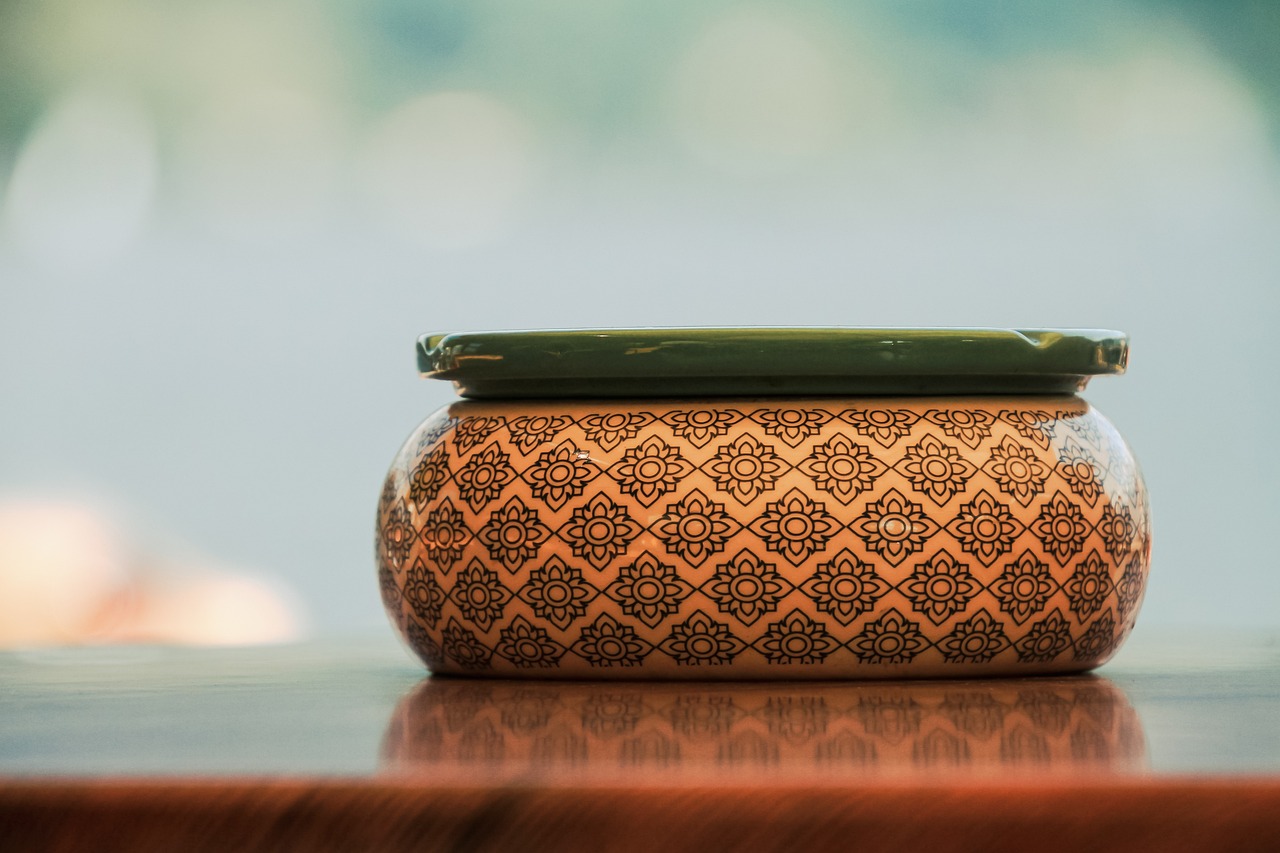
Collecting Porcelain
Collecting porcelain is more than just a hobby; it's a journey through history, artistry, and culture. For many enthusiasts, each piece tells a story, reflecting the time and place it was created. Whether you're a seasoned collector or just starting out, understanding what makes porcelain collectible can enhance your appreciation and guide your purchasing decisions. Imagine walking through a gallery filled with delicate porcelain vases, intricate plates, and exquisite figurines. Each item beckons you to explore its origins, craftsmanship, and the tales it carries.
One of the most alluring aspects of collecting porcelain is the diversity it offers. From hard-paste to soft-paste, and even bone china, each type has its own unique characteristics that can captivate collectors. But what truly elevates porcelain to a collectible status? Factors such as rarity, condition, age, and the reputation of the manufacturer play crucial roles. For instance, pieces from renowned makers like Meissen or Royal Worcester often fetch higher prices due to their historical significance and craftsmanship.
When diving into the world of porcelain collecting, it’s essential to familiarize yourself with different styles and markings. Authentic pieces often bear specific stamps or signatures that can help you identify their origin and authenticity. Here’s a quick guide to some common porcelain markings:
| Marking | Meaning |
|---|---|
| Blue underglaze | Typically indicates a piece from China, especially from the Ming or Qing dynasties. |
| Gold overglaze | Often seen in European porcelain, indicating luxury and decorative intent. |
| Manufacturer’s logo | Each manufacturer has a unique logo that can help you trace the piece back to its origin. |
In addition to knowing about markings, it's crucial to understand how to care for and preserve your porcelain collection. Proper maintenance ensures that your pieces remain in excellent condition, retaining both their aesthetic appeal and market value. Here are some best practices for preserving your porcelain:
- Cleaning: Use a soft, damp cloth for cleaning. Avoid harsh chemicals that can damage the glaze.
- Display: Keep porcelain out of direct sunlight to prevent fading and discoloration.
- Storage: If storing, wrap pieces in acid-free tissue paper to prevent scratches and damage.
As you embark on your collecting journey, remember that the world of porcelain is vast and filled with surprises. Each piece you acquire not only adds value to your collection but also enriches your understanding of art and history. So, whether you’re hunting for that elusive piece or simply enjoying the beauty of porcelain, embrace the adventure that comes with it. Happy collecting!
Q: What is the best way to start a porcelain collection?
A: Begin by researching different types of porcelain and identifying what interests you. Visit antique shops, auctions, and online marketplaces to find pieces that resonate with you.
Q: How can I determine the value of my porcelain?
A: Consult with experts, appraisers, or refer to auction results to get an idea of your porcelain's market value. Factors like age, condition, and rarity significantly influence pricing.
Q: Are there any specific care instructions for porcelain?
A: Yes, avoid using abrasive cleaners and keep pieces away from extreme temperatures. Regularly dust your collection and store it safely to prevent damage.
Q: Is it possible to restore damaged porcelain?
A: Yes, professional restoration services can repair chips and cracks, but it’s essential to ensure that the restoration is done with care to maintain the piece's value.

Identifying Authentic Porcelain
When it comes to collecting porcelain, one of the most vital skills a collector can possess is the ability to identify authentic pieces. With a plethora of reproductions and imitations flooding the market, distinguishing genuine porcelain from fakes can feel like searching for a needle in a haystack. However, fear not! With a bit of knowledge and keen observation, you can navigate this intricate world with confidence.
First and foremost, understanding the characteristics of authentic porcelain is essential. Authentic porcelain is typically made from a specific blend of materials, including kaolin, feldspar, and quartz. This combination gives genuine porcelain its renowned translucence and durability. When you hold a piece of authentic porcelain up to the light, you should notice a soft glow, almost like a gentle illumination. In contrast, many imitations will appear opaque and dull, lacking that signature translucence.
Another important aspect to consider is the weight and feel of the piece. Authentic porcelain tends to be lighter than it looks due to its fine composition. If a piece feels unusually heavy, it might be a sign that it’s not genuine. Additionally, the texture should be smooth and cool to the touch, which is a hallmark of quality porcelain. If you encounter a piece that feels rough or excessively warm, it could be a red flag.
Markings are also crucial in identifying authentic porcelain. Many reputable manufacturers will leave their mark on the bottom of the piece, which can include a logo, name, or other identifying information. Familiarizing yourself with the marks of well-known manufacturers, such as Meissen, Royal Worcester, and Wedgwood, can help you authenticate a piece. You might want to keep a reference guide handy or consult online databases dedicated to porcelain marks.
To further assist you in your quest for authentic porcelain, here’s a quick reference table of common porcelain markings:
| Manufacturer | Mark Description |
|---|---|
| Meissen | Crossed swords, often in blue |
| Royal Worcester | Worcester mark with a crown |
| Wedgwood | Jasperware and impressed marks |
Finally, it’s essential to trust your instincts. If a deal seems too good to be true, it probably is. When purchasing porcelain, especially at flea markets or online auctions, take your time and do your research. Ask questions, seek out reputable dealers, and don’t hesitate to walk away if something feels off. Collecting porcelain should be an enjoyable adventure, not a minefield of anxiety.
In conclusion, identifying authentic porcelain requires a blend of knowledge, experience, and intuition. By paying attention to the characteristics, markings, and overall feel of the pieces, you can build a stunning collection that stands the test of time. So, get out there, explore, and let your passion for porcelain guide you!
- What is the best way to clean porcelain? Use a soft, damp cloth and avoid abrasive cleaners to maintain the integrity of the glaze.
- How can I tell if my porcelain is antique? Look for signs of wear, old marks, and consult experts or reference books on porcelain.
- Are there specific types of porcelain that are more valuable? Yes, pieces from renowned manufacturers or those with unique designs often hold greater value.
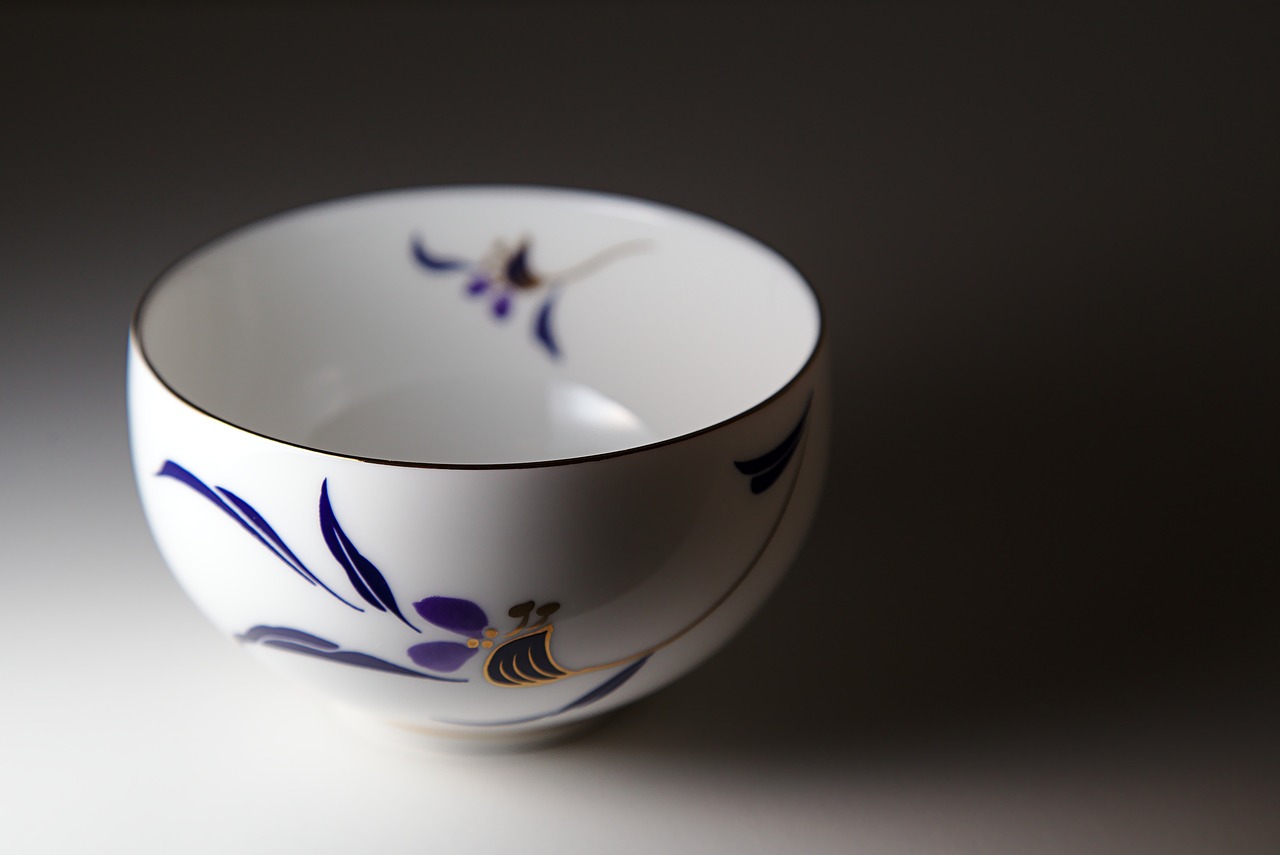
Care and Preservation
Caring for porcelain is not just about keeping it clean; it's about preserving a piece of history, artistry, and sometimes even family heritage. The delicate nature of porcelain means that it requires special attention to maintain its beauty and value. Imagine your porcelain collection as a gallery of memories, each piece telling a story of craftsmanship and culture. To ensure these stories remain vibrant, follow these essential care tips.
First and foremost, cleaning porcelain should be approached with caution. Always use a soft, lint-free cloth or a sponge to wipe down your pieces. Avoid abrasive materials that can scratch the surface. When it comes to washing, lukewarm water mixed with a gentle dish soap is your best friend. Rinse thoroughly and dry with a soft cloth to prevent water spots. For intricate designs or delicate pieces, consider using a damp cloth instead of submerging them in water.
Next, displaying your porcelain thoughtfully can significantly enhance its longevity. Keep your porcelain away from direct sunlight, as UV rays can fade colors and damage the glaze over time. A display cabinet with glass doors not only protects your collection from dust but also allows you to showcase its beauty. Additionally, ensure that your display area is stable and free from vibrations to avoid accidental falls.
When it comes to storage, if you need to pack away some pieces, wrap them carefully in acid-free tissue paper or bubble wrap. This will cushion them against shocks and prevent scratches. Store them upright, if possible, and avoid stacking them to prevent pressure on the delicate surfaces. If you have larger items, such as vases, consider using a sturdy box with dividers to keep them safe.
Lastly, understanding the environment in which you keep your porcelain is crucial. Extreme temperature changes can lead to cracks or crazing. Aim for a stable climate, ideally between 65°F to 75°F (18°C to 24°C) with moderate humidity. If you live in a particularly dry or humid area, investing in a dehumidifier or humidifier can be beneficial.
In summary, caring for porcelain is about respect and appreciation for the artistry involved in its creation. By taking these steps, you can ensure that your porcelain pieces remain as stunning as the day they were made. Remember, a little attention goes a long way in preserving these treasures for future generations to admire.
- How do I clean porcelain without damaging it? Use a soft cloth and lukewarm water with gentle soap, avoiding abrasive materials.
- Can I use my porcelain for everyday dining? Yes, but be cautious with items that are hand-painted or have gold accents, as they may not be dishwasher safe.
- What should I do if my porcelain piece gets chipped? For minor chips, consider using a porcelain repair kit; for significant damage, consult a professional restorer.
- Is it safe to display porcelain in direct sunlight? No, direct sunlight can fade colors and damage the glaze over time.
Frequently Asked Questions
- What is porcelain and how is it different from other ceramics?
Porcelain is a type of ceramic material known for its strength, durability, and translucence. Unlike other ceramics, porcelain is fired at a higher temperature, which gives it a unique glass-like quality. This process makes it less porous and more resilient, setting it apart from earthenware and stoneware.
- What are the main types of porcelain?
There are three primary types of porcelain: hard-paste, soft-paste, and bone china. Hard-paste porcelain is the original form, known for its strength and translucence. Soft-paste porcelain was developed in Europe and is more fragile, often featuring decorative styles unique to the region. Bone china, made with bone ash, is known for its whiteness and strength, often used for fine dinnerware.
- How is hard-paste porcelain made?
The manufacturing process of hard-paste porcelain involves a precise combination of kaolin, feldspar, and quartz. These materials are mixed, shaped, and then fired at high temperatures, resulting in a strong and translucent final product. The craftsmanship involved in this process is crucial, as it affects the overall quality and aesthetic of the porcelain.
- What decorative techniques are used in porcelain art?
Porcelain serves as a canvas for various artistic expressions, including painting, glazing, and sculpting. Artists use techniques such as underglaze and overglaze painting to create intricate designs. Glazing not only enhances the visual appeal but also adds a protective layer, ensuring the durability of the artwork.
- What should I look for when collecting porcelain?
When collecting porcelain, it’s essential to recognize authentic pieces. Look for markings, the quality of craftsmanship, and the materials used. Understanding market trends and the historical context of the pieces can also help you identify valuable items. Always do your research before making a purchase!
- How can I properly care for my porcelain collection?
To ensure the longevity of your porcelain, gentle cleaning is key. Use a soft, damp cloth to wipe surfaces, avoiding harsh chemicals that can damage the glaze. Displaying porcelain in a stable environment, away from direct sunlight and extreme temperatures, will also help maintain its beauty and value over time.
- What is the cultural significance of porcelain in different regions?
Porcelain holds immense cultural significance across various regions. In China, it symbolizes wealth and sophistication, while in Europe, it reflects artistic evolution and trade influences from the East. Each culture has developed its own unique styles and traditions surrounding porcelain, making it a fascinating subject for study.



















